FREE Standard Shipping On All Orders $100 or More!*
What Could Possibly Go Wrong? Mistakes that Destroy Pool Equipment
It’s the little things that can do the most damage to your swimming pool and your pool equipment. A simple, absent-minded mistake could lead to thousands of dollars in damages. A seemingly mundane habit could be accelerating your pool equipment's early demise.
Perhaps a bad habit you didn’t take seriously has suddenly rendered your pump, cleaner or heater useless. It’s true, some warnings carry more weight than others, so we’re going to take a look at the most common pool mistakes that could be destroying your pool or pool equipment.
1. Exposing your Solar Cover to High Chlorine
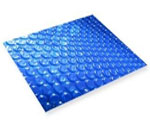
High levels of pool chlorine and exposure to pool shock, even non-chlorine shock, is not something that you want exposed to your solar blanket. The fastest way to destroy your pool cover is to shock your pool, and then place the solar blanket over the water. The adverse effects that these chemicals have on the plastic of a solar cover is similar to the effects that it has on bacteria. Try not to use your solar cover for a few days after shocking your pool, or until chlorine levels are normal. Other overlooked factors that can destroy your solar cover are low pH and prolonged exposure to the sun while rolled up. Use a solar blanket Poly Tarp when you have it on the the reel to protect it from harmful UV rays.
2. Placing Chlorine Tabs Directly Into the Skimmer
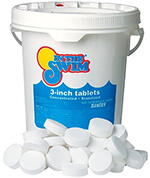
This could very well be the most common mistake that pool owners make, or perhaps the most common mistake that just isn’t taken seriously enough. Chlorine tabs, especially In the Swim 3” Chlorine Tabs, are highly concentrated, acidic wonders of modern chemistry that are made to dissolve slowly throughout the pool. When left in your skimmer with the pump off, chlorine tabs continue to dissolve, filling the skimmer and pipe with chlorine. When the pump turns on again, it sucks several gallons of super concentrated chlorine directly into your pump, heater, and filter. What was once your ally has now become your nemesis, a singular corrosive force operating from within as it eats your pipes and pool equipment from the inside-out. Chlorine is strong; strong enough to sanitize 20 thousand gallons of water, and also strong enough to corrode plastics, rubber and metal.
3. Leaving your Robotic Pool Cleaner in the Pool All the Time

If you own a robotic pool cleaner, odds are that you love the little guy. You might even have a name for yours. We call ours Roger, Roger the Tiger Shark. Odds are even higher that you paid a decent amount of money for your automatic pool cleaner. Protect your investment by removing your pool cleaner from the water when its cycle is complete. Prolonged exposure to the water alone can begin to deteriorate the softer parts of your cleaner, and aggressive water conditions can oxidize metals and plastics. Don’t shock your pool with your cleaner in the water, and try not to leave it in the water any longer than it needs to complete a cleaning cycle. And, be sure to store him (or her) in a safe place, out of the sun and weather, and protected from [other types of] harm.
4. Starting your Pump With a Dead Head

I don't mean a Grateful Dead fan, a Dead Head is when the water has no where to go, because of a closed valve (or two), or because winter plugs are still in the wall. Your pump is creating powerful forces to pull and push water through the plumbing into the filter and and back to the pool. Starting the pump with closed valves or closing the return valves while the pump is running has a 'water hammer' effect. Make sure all valves are wide open because if a valve is closed, or a return line is plugged or blocked - the results can be destructive and also dangerous if you are standing next to the filter system. Perhaps this may seem obvious, but it does happen, be sure that all valves after the pump are wide open, and the return lines are clear all the way back to the pool.
5. Not Protecting your Pool Heater
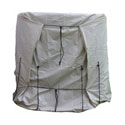
You probably don’t give much thought to your pool heater. It most likely works as it is supposed to and hardly ever has to be serviced. And then one late summer morning you jump into your pool like normal, only to emerge bug-eyed, startled, and very cold. Damage to pool heaters can be a subtle, gradual process that you are completely oblivious to. Acidic pH and Alkalinity levels feed on copper heat exchangers, stripping the copper and staining your pool. Exposure to the elements can also rust components of your heater especially if you live in a climate with harsh, snowy winters. It’s always best to use a Pool Heater Cover when your pool is closed. Covering your heater prevents insects and rodents from nesting inside, as well as protecting it from moisture.
6. Low Calcium Hardness

Perhaps your pH and alkalinity, cyanuric and chlorine are perfectly aligned. You test daily and know just what to do at the slightest hint of disturbance in the force. All of your precise testing and measuring could be in vain if your calcium hardness gets too low. Aggressive water with a thirst for calcium can pull calcium from your pool’s plaster and tile grout. For vinyl pools, there are those that say it doesn't matter, but to protect your vinyl liner and for good water balance, maintain a minimum calcium hardness level of at least 150 ppm. Plaster and pebble surfaces should keep calcium hardness closer to 200 ppm.
7. Low Water Levels
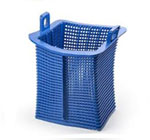
This may seem obvious but there are several scenarios in which your water levels could fall below the skimmer line causing your pump to intake only air. This causes pool pumps to 'lose prime', which can lead to damaged pump and pipes. I’ve experienced this myself when vacuuming to waste, backwashing or draining the water level during winterization. Pool leaks can rapidly cause a loss of pump prime, as can air leaks in front of the pump (unrelated to water level). Any situation that causes your pump to lose prime, can cause your pump to overheat, which can warp pump baskets and melt shaft seals, or shrink the threads of the attached PVC fittings. In extreme cases of overheating, it can warp the pump housing itself.
5 Ways to Destroy Pool Water Quality
1. Not Running the Pump Long Enough
Even in a perfectly balanced pool, the quickest way to start an algae problem is to not run your pool pump long enough. Most people get in trouble when they try to save a few bucks on their electric bill by turning the pump off. This may seem like a great idea, but in reality, the money saved by leaving it off or running it less will quickly be spent on pool chemicals to make the water clear again. If your pump and filter are sized properly for your pool, the water should be circulating 7-8 hours a day during the summer. If you have problems with algae growth or the pool is used frequently, you may want to run it longer.
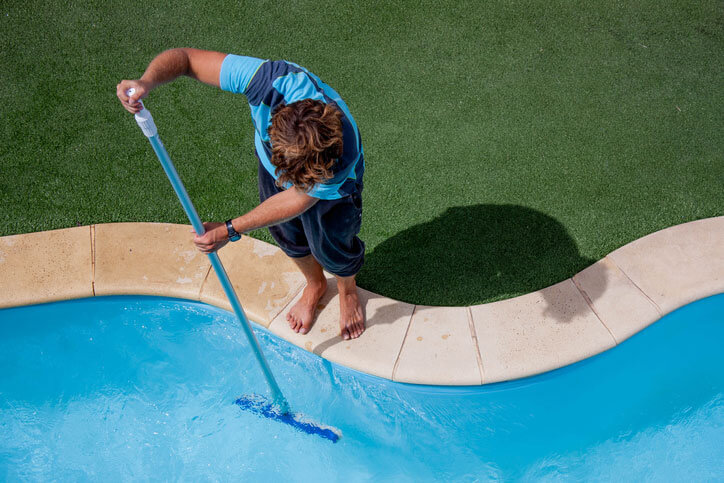
2. Not Cleaning the Pool Walls
This is probably the most overlooked part of any pool care regimen. Regularly cleaning the surfaces of your pool with a soft, non-scratching pool brush is another way to help keep algae at bay and preserve the appearance of your pool. It's important to not only scrub the walls, but also around steps, behind ladders and along the waterline, which are notorious for accumulating grime and/or scale. Pool cleaners will help keep the dirt to a minimum, but brushing is especially important for the corners and crevasses they can't reach.
3. Not Monitoring All Aspects of Water Chemistry
Unless you hire a professional service to monitor the quality of your pool water, it's easy to focus on a few aspects of your water's chemistry and disregard the rest. One of the most commonly forgotten pieces of the pool chemistry puzzle is pH. Water that's either too acidic or too basic can wreak havoc on your pool and equipment over time. Keeping track of water alkalinity can also help keep your pH stabilized. Other important factors to monitor include calcium (water hardness), presence of metals, free and total chlorine levels and so on. Minor adjustments during weekly water tests are much more effective than making major changes all at once, which could cause unstable water chemistry.
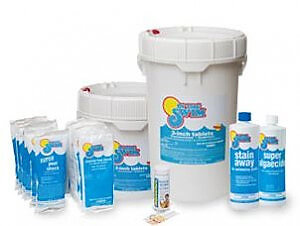
4. Not Following Instructions on Chemical Labels
Water chemistry can be complicated, so it's important to read all labels before adding any chemicals to your pool. Adding them in the wrong order, using improper application methods or adding them at the wrong time of day can bring a whole slew of consequences, from the chemicals being ineffective to the pool or equipment being damaged. Even worse, improper handling or storage could cause physical harm to the user. Let's use a popular example: chlorine pool shock. The directions explain how to properly prepare the shock for a pool and how to protect yourself from fumes or physical contact. Instructions also recommended adding pool shock at dusk so the sun doesn't burn it off before it has a chance to work. Not following these instructions might force you to buy more shock, cause damage to pool surfaces, or even worse, make equipment explode. Don't risk it...just read the instructions!
3. Not Addressing Algae Problems Correctly
Not only is algae a common pool problem, it's also the initiator of several pool care mistakes. Algaecide is often used as a treatment and preventative in conjunction with regular pool care, which includes proper water balance and adequate circulation. However, a lot of people don't realize that algaecides can significantly lower chlorine concentration in a pool. Follow manufacturer instructions to reach proper chlorine levels before getting started. Then, while the algaecide is working, turn your pump on to keep the water circulating and ensure full coverage. When removing algae from a pool, it's important to only use a vacuum on the "waste" setting so the algae-infested water isn't returned to the pool. Using a robotic pool cleaner or pressure side cleaner will just propel the algae spores around your pool and prolong the problem.
Pool care isn't too challenging with a little know-how, and learning how to avoid mistakes in the first place will help you prevent these problems in your own pool.
Key Takeaways:
- Remove the solar cover after shocking the pool, store it in the shade.
- Put chlorine tabs in a floater or chlorinator.
- Remove robotic cleaners after their cleaning cycle.
- Make sure all valves are open before starting filter pump.
- Protect your pool heater during winter.
- Keep Calcium Hardness in range.
- Keep pool water level proper.
- Run your pump at least 12 hours per day.
- Regularly brush off all pool surfaces.
- Keep up with all aspects of water chemistry.
- Follow all instructions on chemical labels.
- When treating algae, watch chlorine levels with algaecide
These pool fails could end up costing you money in pool parts, replacement equipment or in time wasted on fixing the pool when you should be enjoying yourself! From the mundane to the extraordinary, these 8 pool mistakes are all easily avoided, yet often taken for granted.
Have a potential common pool mistake you think we should add to our list? We would love to hear from our pool community! Together we can pool our knowledge and make sure we spend more time enjoying our pools, not fixing them.